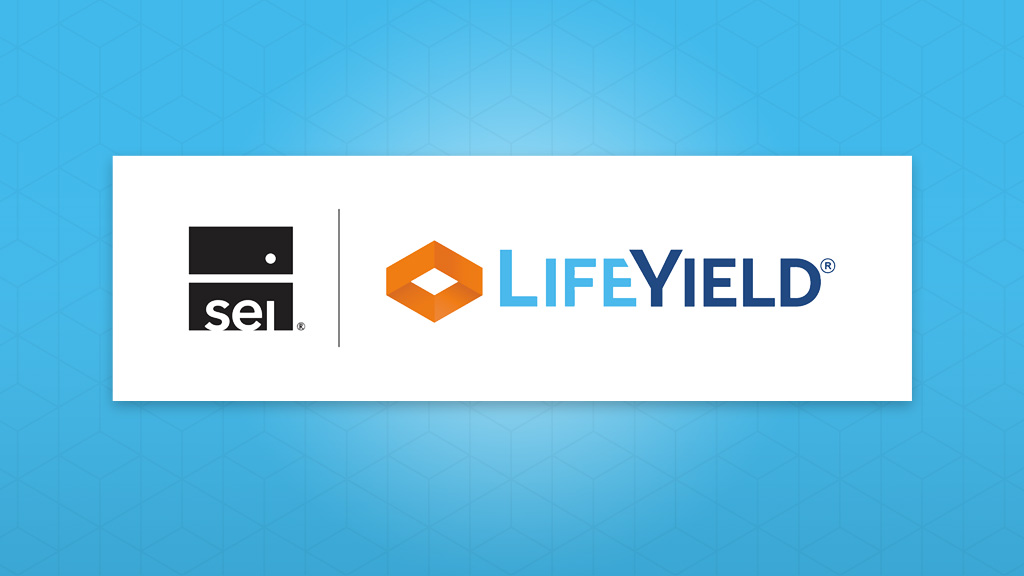7 Ways to Get More Retirement Income Throughout Decumulation

Clients with financial advisors today are informed and savvy. They know that taxes can eat away at their assets and threaten their financial security in retirement.
So even when a financial advisor has impressed investors by paying attention to their needs and making thoughtful recommendations, those clients will feel let down if, around April 15, they find themselves with large tax bills.
Advisors who are focused on investment performance and risk but turn a blind eye to tax efficiency and a decumulation strategy will eventually lose clients to the firms and advisors who don’t make that costly mistake.
LifeYield has tax-efficiency solutions, available as application programming interfaces, commonly referred to as APIs, that can help to automate the practices that lead to more significant accumulation and more reliable income during decumulation.
Automating these practices and consistently applying them over the course of an advisor-client relationship is a win for everyone:
- Clients have more money for decumulating to create retirement income
- Advisors earn more revenue per client, retain more clients and get more referrals
- Firms grow their assets under management and gain a larger market share
Here are seven ways financial advisors can contribute to clients’ needs for tax-efficient asset management and retirement, or decumulation, strategies.
1. Asset Location
Many advisory systems attempt to optimize tax efficiency at the account level instead of assessing the resources and needs of the household. LifeYield scans a household’s portfolio and recommends the tax-optimal location for each asset among taxable, tax-deferred, and non-taxable accounts.
LifeYields Asset Location technology even creates a score quantifying the tax efficiency baseline improvement (on a scale of 0 to 100), the improvement possible (also scored) through optimizing asset location and a detailed strategy advising on trades to increase the score.
Advisors can demonstrate their value by showing clients the dollar value of optimizing asset location over short and long horizons. Moreover, more assets remain invested by reducing taxes and increasing revenue for both advisor and the firm.
Asset location is the No. 1 tax-efficiency strategy (responsible for up to 75 bps, according to Vanguard) for enabling clients to save more during accumulation and have more available for decumulation in retirement.
2. Ad-Hoc Tax-Smart Withdrawals
Investors decide (or need) to take withdrawals from their portfolios for a variety of reasons, such as:
- Large purchases, such as a house, automobile, or boat.
- College tuition payments.
- An income stream to weather a period of unemployment.
- Bridge a period in a client’s decumulation phase between retirement and collecting income from pensions, annuities, and Social Security.
When clients need to make ad-hoc withdrawals, advisors need to make sure they’re helping clients choose the correct account(s) to tap, the assets to liquidate, and possibly the sequence of withdrawals from multiple household accounts. And they need to minimize the tax effect of any ad-hoc withdrawals.
The LifeYield Tax-Smart Withdrawal API can be used on a single account or a household portfolio. Another significant benefit of the LifeYield tax-smart withdrawals is the ability to reduce or eliminate the need to do rebalancing as a separate exercise.
3. Tax Harvesting
Tax harvesting identifies opportunities to offset capital gains and losses within an account or a household portfolio. The process is most effective when applied to the latter – across all household taxable and non-taxable accounts to find the best positions for tax harvesting.
Tax harvesting is a practice that continues right through the decumulation phase to enhance retirement income.
Ideally, tax harvesting should occur at the lot level, allowing optimal use of appreciated assets for charitable donations and gift-giving – goals that many advisory clients have.
Tax harvesting procedures should also be robust enough to avoid wash sales across taxable and non-taxable accounts. And they should accommodate the client’s tax rates in both current and future periods, especially when the client’s household is in danger of moving to a higher tax bracket.
Finally, an advisor should be able to set a limit on total gains/losses and control total harvested proceeds as required.
LifeYield Tax Harvesting checks all these boxes. Plus, it doesn’t demand that a firm rip out its current technology and rebuild it. Like all LifeYield APIs, Tax Harvesting can be implemented as an overlay to a firm’s systems to help advisors minimize tax drag on client portfolios.
4. Multi-Account Rebalancing
Ideally, the asset allocation that suits a client’s risk tolerance and timeline should be sustained even as clients make tax-smart withdrawals, do tax harvesting, make new investments, or open new accounts.
It is, however, easy to disrupt the client’s selected asset allocation through these and other activities or simply in times of significant market fluctuations.
What’s needed, then, is a multi-account rebalancing engine like LifeYield’s. Rebalancing across a household’s accounts helps ensure that money continues to accumulate and sets the stage for the eventual decumulation activities to create income for retirees.
An advisor needs to identify assets ideally suited for trades, sales, or withdrawals to rebalance assets across accounts while sustaining a portfolio’s tax efficiency. This is usually a manual and time-consuming process – one that is ripe for the automation that LifeYield is well suited to help firms achieve.
In the real world, a financial advisor may need to rebalance portfolios when a client’s risk-adjusted performance drifts from the historical average of its benchmarks. When the need to rebalance arises, the best procedure is to evaluate and address asset allocation across all household accounts.
The LifeYield rebalancing engine can accommodate single account rebalancing, but the real alpha comes when you coordinate all of a household’s taxable, tax-deferred, and tax-free accounts. It also provides advisors and their clients with key statistics, including drift, total realized gains and losses, after-tax returns, and the dollar benefit of the coordination achieved.
5. Tax-Aware Transitions
It can be challenging to transition a portfolio to a new strategy, such as from active to passive management. Large portfolios or having a significant tracking error between actual and target risk characteristics make the task even more complex.
A tax-aware approach must balance reducing the tracking error with minimizing the tax liability to improve the client’s after-tax returns immediately and over the long run.
Optimizing retirement income during decumulation requires a tax-efficient approach at the household level that satisfies the client’s cash flow needs. This transition requires advisors to select risk-appropriate investments using tools designed to reduce transaction costs and household tax liabilities, including those for optimizing asset location, tax harvesting, and tax-smart withdrawals.
6. Social Security Maximization
It’s essential to find the Social Security filing strategy that will maximize its benefit to your clients over their expected retirement years. Waiting until 70 is often best for an individual. The government provides a significant boost (equivalent to 8% per year) to those who defer collecting between their full retirement age and 70.
But individual situations vary, and for couples, widows or divorced individuals, maximizing Social Security can be more complex. And choosing when to file can depend on other available income sources, including part-time employment, pensions, annuities, trusts, real estate, etc.
Clients will appreciate a “what-if” analysis of a tool like LifeYield Social Security+ to see the impact of varying filing scenarios. Adding the Visual Layers capability that LifeYield offers arms advisors with a potent way to demonstrate how to close gaps and potentially purchase new products as part of a comprehensive decumulation strategy.
7. Use Retirement Income Sourcing Technology
Financial planning is the foundation of sound retirement income planning. But a plan is only a plan unless the financial advisor can activate it – through investment advice, tax-smart portfolio management, and – the brass ring – consolidation of client accounts.
When it comes time for retirement, a client needs to pivot from planning and accumulation mode to working with an advisor on a decumulation plan to maximize income and minimize taxes over the golden years.
LifeYield introduced Retirement Income Sourcing to address the need for comprehensive decumulation planning and execution as people continue to retire at a pace of 10,000 to 12,000 a day.
Rule-of-thumb approaches don’t cut it any longer. Clients want customized, detailed decumulation plans, right down to sequencing withdrawals at the security and lot level, providing financial security and peace of mind.
The best solution is:
- Automated, scalable, and personalized.
- Respectful of a firm’s existing and trusted systems, like those used for financial planning.
- Able to provide detailed tax breakdowns (at the federal and state levels) on a multi-year basis that account for a household’s tax brackets, deductions, exemptions, Social Security and investment taxation, etc.
- Adaptable to a firm’s preferences and capabilities, current and evolving, for such factors as capital market assumptions, level of detail and number of trials.
- Ready for a firm’s customization, branding, and user experience requirements.
LifeYield hits each of those requirements on the head.
LifeYield technology back-ends firms’ current systems, minimizing the need for changes to a firm’s IT investment. There’s no need for new data sources or databases.
LifeYield makes it possible to eliminate shortcomings, like single sign-on integrations or unidirectional system dataflows, that frustrate advisors, impede their embrace of technology and deflate their ability to manage portfolios at scale.
LifeYield delivers precise results that help you identify each client’s best course of action throughout their decumulation phase. You’ll know which trades and withdrawals to execute and how to do so in the most tax-efficient way to optimize current and future asset drawdowns.
LifeYield’s leaders have spent years figuring out the keys to leveraging tax efficiency throughout an investor’s lifetime – from accumulation through decumulation. They are committed to seeing that firms entrusted with helping clients define and achieve their goals can do so on a scale that was, until only recently, unattainable.
More and more firms recognize the competitive advantage of tax efficiency from when clients open their first account in the accumulation phase through their retirement years and decumulation period. LifeYield can see that those firms provide their advisors with the tools to address the demand for comprehensive, coordinated, tax-wise financial planning, investment management, and retirement income planning.
Monthly insights from our Chief Growth Officer, Jack Sharry
Get exclusive insights and interviews from around the industry

 By
By 




